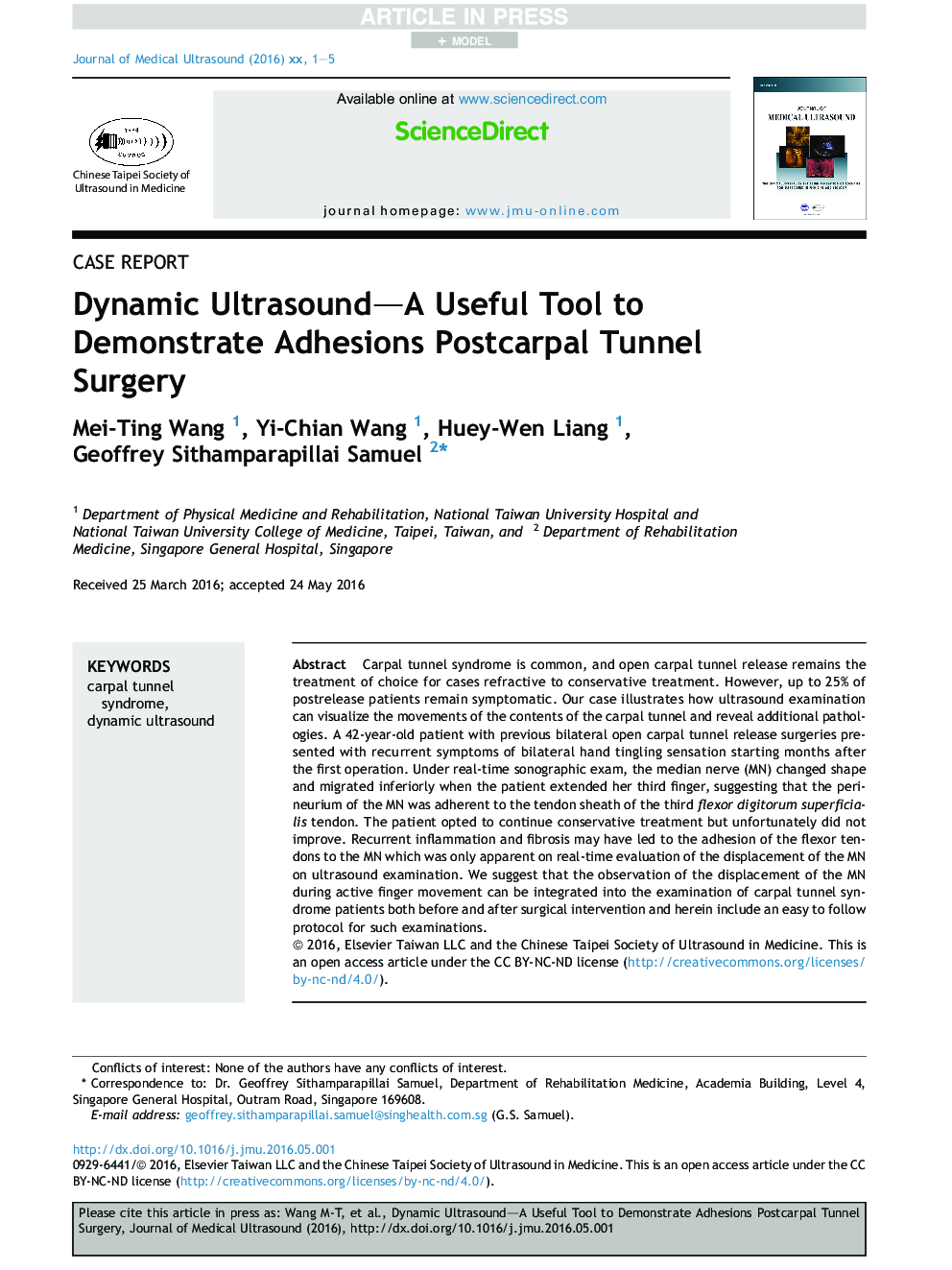| Article ID | Journal | Published Year | Pages | File Type |
|---|---|---|---|---|
| 8823601 | Journal of Medical Ultrasound | 2016 | 5 Pages |
Abstract
Carpal tunnel syndrome is common, and open carpal tunnel release remains the treatment of choice for cases refractive to conservative treatment. However, up to 25% of postrelease patients remain symptomatic. Our case illustrates how ultrasound examination can visualize the movements of the contents of the carpal tunnel and reveal additional pathologies. A 42-year-old patient with previous bilateral open carpal tunnel release surgeries presented with recurrent symptoms of bilateral hand tingling sensation starting months after the first operation. Under real-time sonographic exam, the median nerve (MN) changed shape and migrated inferiorly when the patient extended her third finger, suggesting that the perineurium of the MN was adherent to the tendon sheath of the third flexor digitorum superficialis tendon. The patient opted to continue conservative treatment but unfortunately did not improve. Recurrent inflammation and fibrosis may have led to the adhesion of the flexor tendons to the MN which was only apparent on real-time evaluation of the displacement of the MN on ultrasound examination. We suggest that the observation of the displacement of the MN during active finger movement can be integrated into the examination of carpal tunnel syndrome patients both before and after surgical intervention and herein include an easy to follow protocol for such examinations.
Related Topics
Health Sciences
Medicine and Dentistry
Radiology and Imaging
Authors
Mei-Ting Wang, Yi-Chian Wang, Huey-Wen Liang, Geoffrey Sithamparapillai Samuel,
